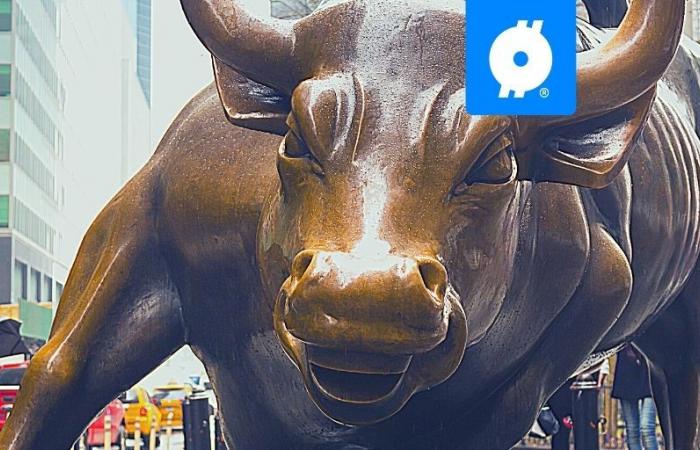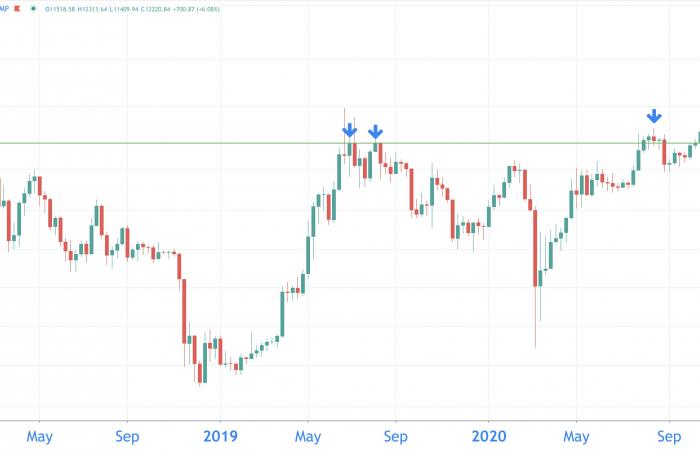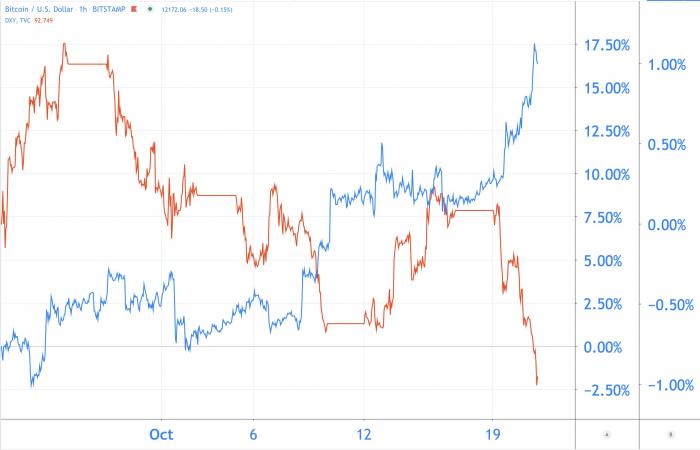Bitcoin has reached the highest price of 2020! Compared to its low in September, the world’s largest cryptocurrency is up nearly 30 percent. Can bitcoin keep this up? Seven reasons why the bull market has only just started, below the video.
1 | Bitcoin is at its highest point this year
You look at the daily chart below. Bitcoin is going like a rocket, yesterday the price broke with conviction due to the resistance of 12,000 dollars (10,123 euros). And today, bitcoin reached its highest price of this year with USD 12,867 (10,836 euros). The green line represents the previous peak in August. If this line can become a support, that is a very positive signal.
2 | Long term support
Bitcoin also broke through a long-term resistance yesterday. You can see that below on the weekly chart. The green line represents 11,500 dollars (9,703 euros), this level was a tough nut to crack until recently. Can bitcoin continue to rise or find support at this level? Then the all-time high of 20,000 dollars (16,866 euros) comes into focus even more sharply.
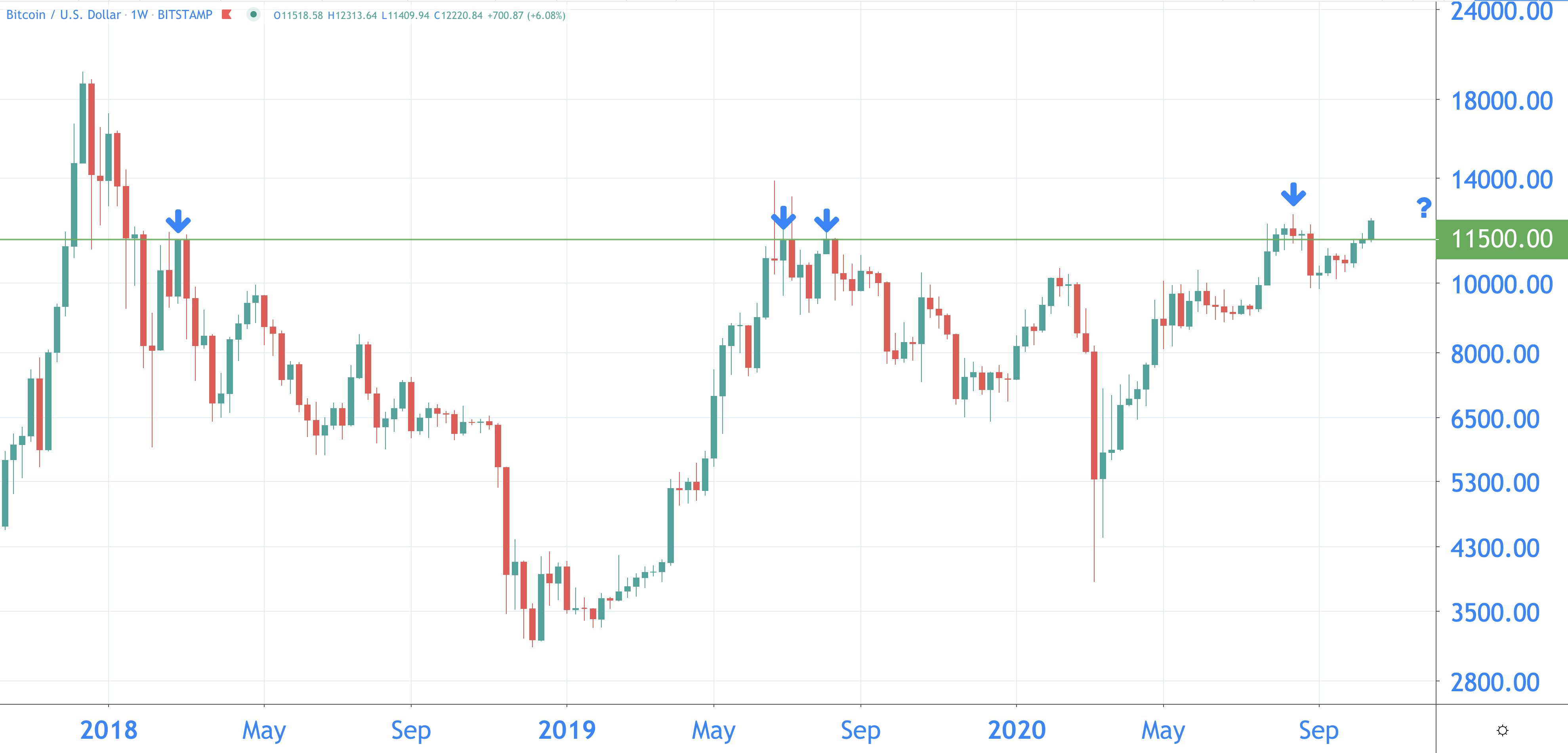
3 | Are altcoin investments flowing into bitcoin?
It’s an assumption, but one possible reason for the rise is that altcoin investors are switching to bitcoin. This can drive the price of bitcoin up further. Below you can see the graph of bitcoin dominance. This percentage indicates what percentage of the crypto market consists of bitcoin.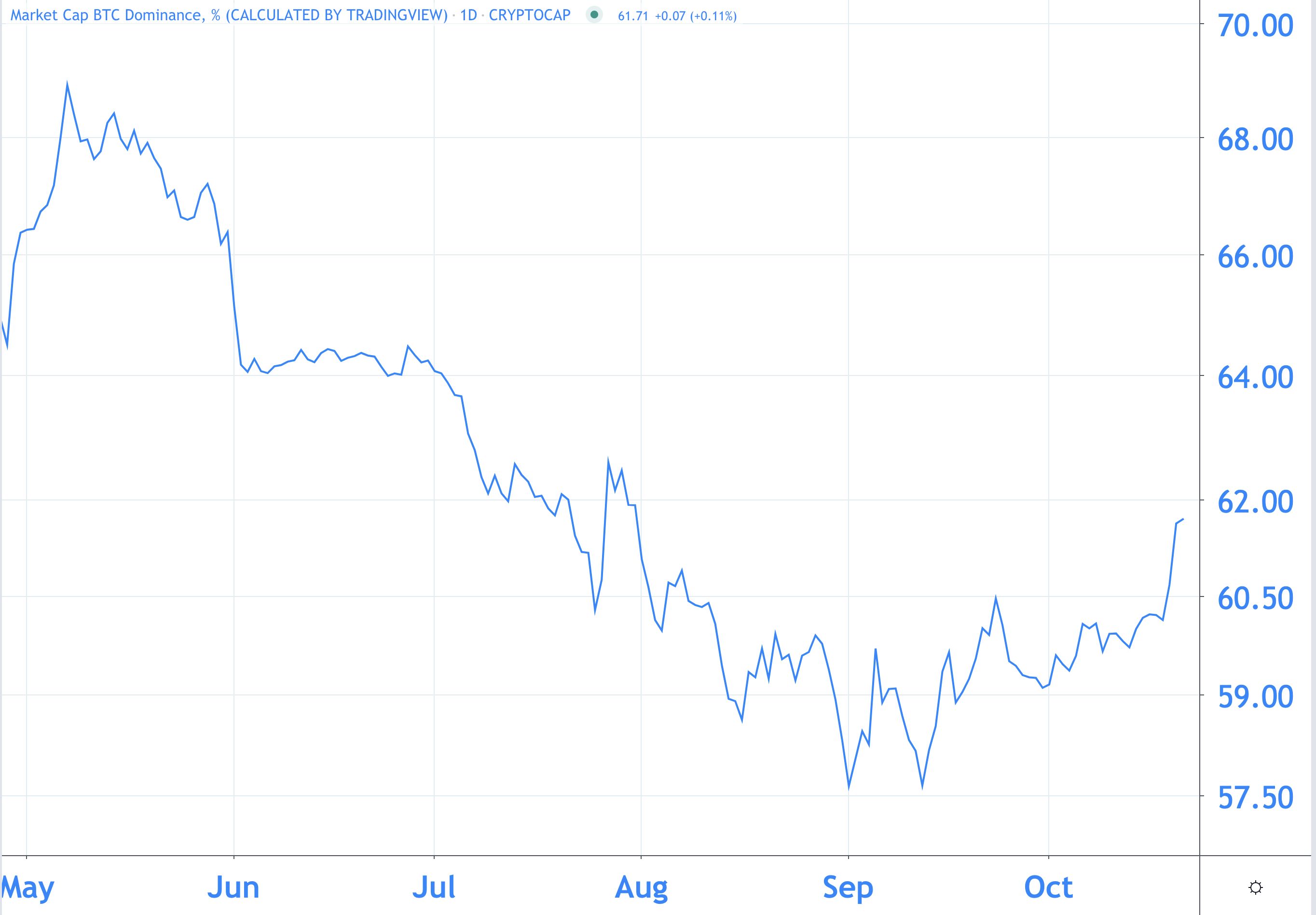
In the period from May to September, the prices of altcoins rose faster than the price of bitcoin. You heard about tokens going to the moon from one day to the next almost daily. Now it is calmer on the altcoin market, and bitcoin is once again taking the lead.
4 | Less and less bitcoin on exchanges
Another possible reason for the rise of bitcoin is that the bitcoin balance on cryptocurrency exchanges has been declining since February. Especially since the beginning of October, the number of bitcoins on stock exchanges has fallen rapidly. It seems that investors are less and less inclined to trade with bitcoin, but they are willing to hold onto their bitcoin.
And that is only positive for the price of bitcoin. The offer is already limited, and is now getting smaller. Combine that with rising demand, and you understand why this can be extra fuel for bitcoin’s engine.
5 | Bitcoins are held longer
Yesterday you read that bitcoins are being held longer and longer. More than 63% of all bitcoins have now been idle for more than a year. They are probably investors who are hoping for a higher price and are willing to wait a long time for it. With each cycle, this percentage of bitcoins that is held for a long time is slightly higher.

6 | Position of miners indicates bull market
We must not forget that bitcoin miners also influence the price. Miners are participants on the network who process bitcoin transactions in blocks. They do this by providing computer power, and for this they receive a reward in bitcoin.
Bitcoin mining is no longer a hobby project, but a million-dollar market. Companies in Asia and America have set up entire data centers to mine bitcoins. Since these miners receive bitcoin as a reward, they can influence the price. If they sell a large amount of bitcoin in one go, it has a negative impact on the price.
The Miners Position Index (MPI) of cryptocurrency data analysis agency CryptoQuant indicates whether miners buy or sell more on average. A value above 2 says that miners are selling their bitcoin, and a negative value is an indication that miners are holding their bitcoin to keep the selling pressure low.
At the moment the value is just above 0, which means that miners are daring to sell bitcoin again. And that, as crazy as it may sound, is only positive. In a strong market, miners can sell bitcoin without having much influence on the price. You saw that in 2019 (Case A) in the tweet below. Is this the start of a new bull market?
7 | The dollar’s weakness is bitcoin’s strength
And to complicate matters further, the relative strength (or rather weakness) of the dollar plays a role. Below you see the rate of the Dollar Currency Index (DXY) in red and the bitcoin rate in blue. The DXY is a weighted average of the dollar’s value, measured in a basket of currencies such as the Euro, British Pound and Japanese Yen.
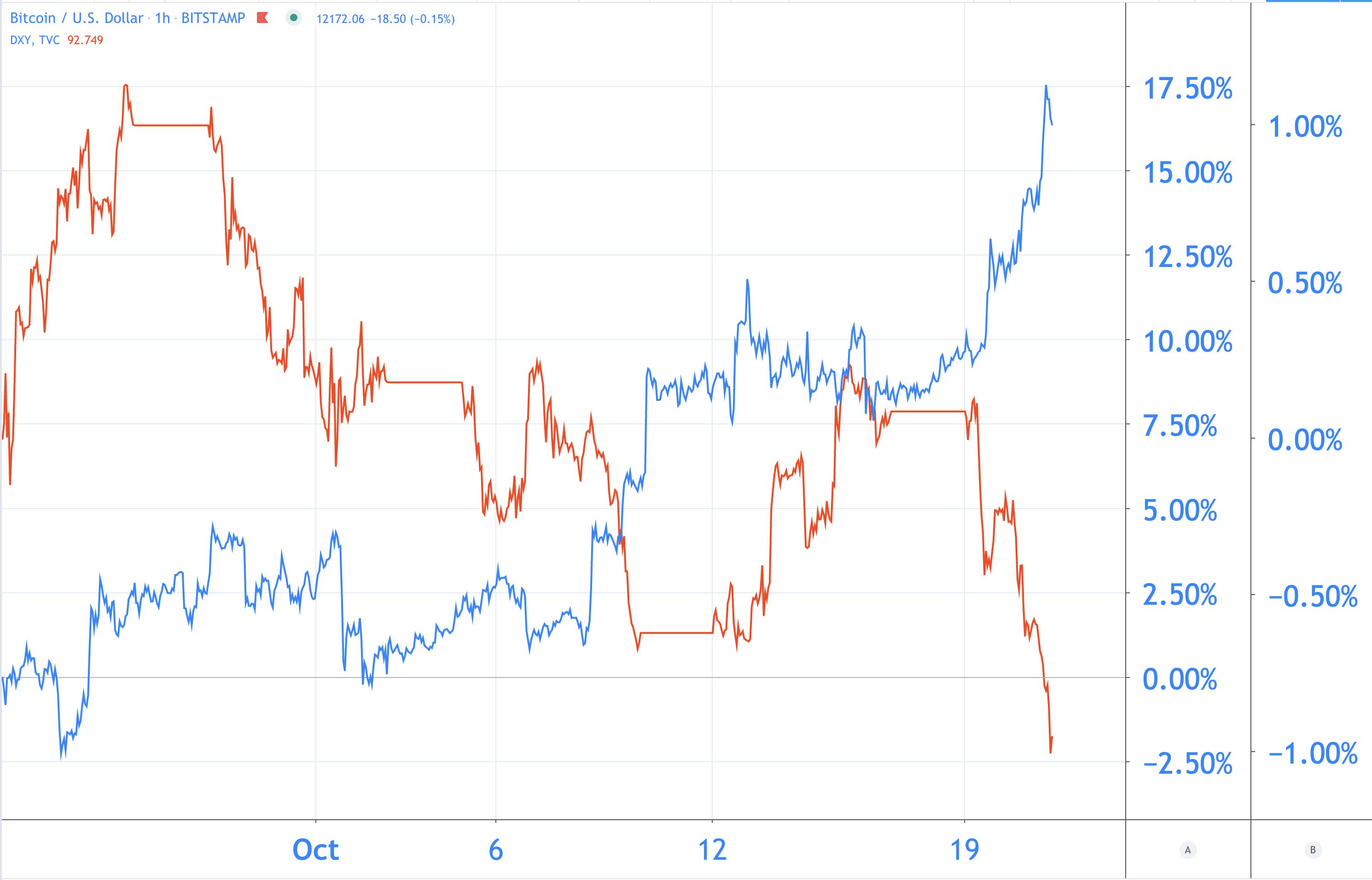
Why is this important? For some time now, there has been a negative relationship between the DXY and the bitcoin price. If the DXY falls, bitcoin rises, and vice versa. There is currently talk of a possible second round of stimulus for US citizens. This has an impact on the value of the dollar, and thus indirectly also on the price of bitcoin.
*The article has been translated based on the content of Source link by https://nieuws.btcdirect.eu/bitcoin-analyse-2020-bull/
. If there is any problem regarding the content, copyright, please leave a report below the article. We will try to process as quickly as possible to protect the rights of the author. Thank you very much!
*We just want readers to access information more quickly and easily with other multilingual content, instead of information only available in a certain language.
*We always respect the copyright of the content of the author and always include the original link of the source article.If the author disagrees, just leave the report below the article, the article will be edited or deleted at the request of the author. Thanks very much! Best regards!
These were the details of the news Highest price 2020! 7 reasons why the Bitcoin bull market... for this day. We hope that we have succeeded by giving you the full details and information. To follow all our news, you can subscribe to the alerts system or to one of our different systems to provide you with all that is new.
It is also worth noting that the original news has been published and is available at news1.news and the editorial team at AlKhaleej Today has confirmed it and it has been modified, and it may have been completely transferred or quoted from it and you can read and follow this news from its main source.

